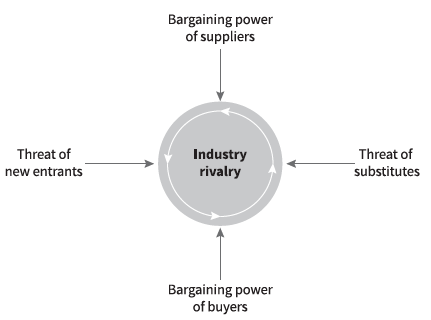How much of your current strategy will help you compete in the digital economy? And what have you done over the last few years?
Perhaps you have acquired companies, expanded your services or products, or have optimised your supply chain. You may have changed your organisation's structure a few times, and appointed new leaders with fresh ideas.

Perhaps you have met changing customer expectations by updating your website, or refreshing your brand in some way. You also may have tried to increase margins by cutting operational expense lines.
Investment in technology and appointment of new roles gives boards, shareholders and executives a sense that 'we are doing something'. But what most leaders have failed to do is align their newly implemented technology with their underlying business strategy and external market trends.
Is your strategy cohesive?
Many leaders talk about the need to promote a culture of innovation, make investments in start-ups, or invest in technology skills and experience at a board and executive level. These individual moves are all worthwhile, but they must be linked together as a cohesive set of transformation initiatives.
You must think firstly about your business model, what your customers want now and in the future, and align these fundamentals with the interests of shareholders. Internally, a new kind of strategy will require you to manage the process of change.
Meanwhile, the competitive landscape, consumer preferences and technology are changing so quickly - and with such disruptive force - that putting in place a business strategy designed for our digital world is now a matter of survival.
Our solution is to go back to basics, revisit your economic engine, and develop a new, digitally integrated strategy. But first, let's turn our focus to the old model to understand why it's no longer relevant.
The old model
By now, you are likely aware of the insufficient link between your strategy and technology. You see the symptoms everywhere. You make massive investments in IT, but these fail to make a significant impact on the bottom line. New competitors are taking market share.
Before we look at the solution, let's look at the problems in detail.
In 1980, Michael Porter published Competitive Strategy, which transformed the theory, practice and teaching of business strategy throughout the world. Porter's Five Forces Framework - a model for analysing an industry to determine ideal corporate strategy - has been instrumental in the way leaders of pre-digital incumbents identify profitability and attractiveness.
The model identified five features that play a part in shaping in every market. At the centre is industry rivalry, which is enhance by the bargaining power of suppliers, the threat of substitutes, the bargaining power of buyers and the threat of new entrants.

But the internet has changed everything, and the application of Porter’s forces needs a refresh. In other words, a new approach to strategy and competitive advantage is needed.
The new model
The internet, social media, near-zero distribution and customer engagement costs, explosion of data, platform-based business models and the rise of artificial intelligence have forced speed and innovation to the top of the priorities stack for many boards and executives.
These same factors have enabled:
- Unprecedented speed of transaction
- Globally scaled supply and distribution
- Faster time to market for new businesses
- Consumer awareness of what they are purchasing and the myriad alternatives
With a nod to Porter, our new model of competitive forces in the digital world looks something like this:
At its heart, our new economy is a customer's world, one in which buyers enjoy remarkable leverage, choice and influence.
These forces can work against you. Or, as a pre-digital incumbent, perhaps you will avoid the brunt of their impact in the short term while savvy new entrants capitalise on these forces to increasingly build market share in your category. Alternatively, you can learn to harness the momentum of digital, and use it to fuel your business growth.